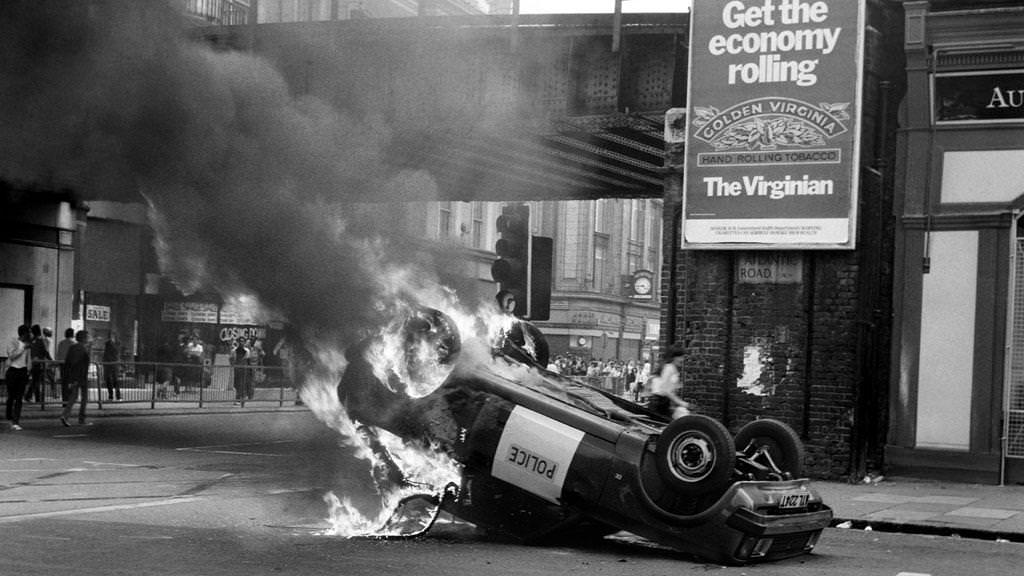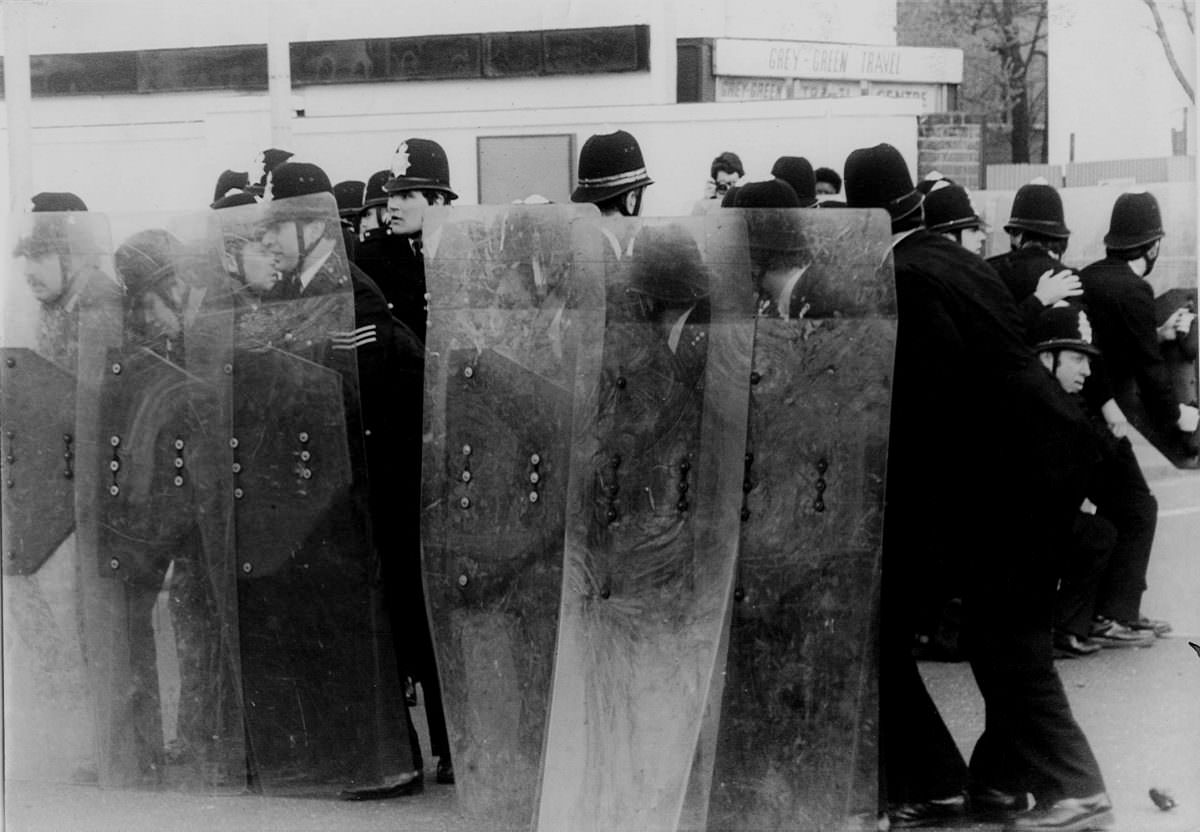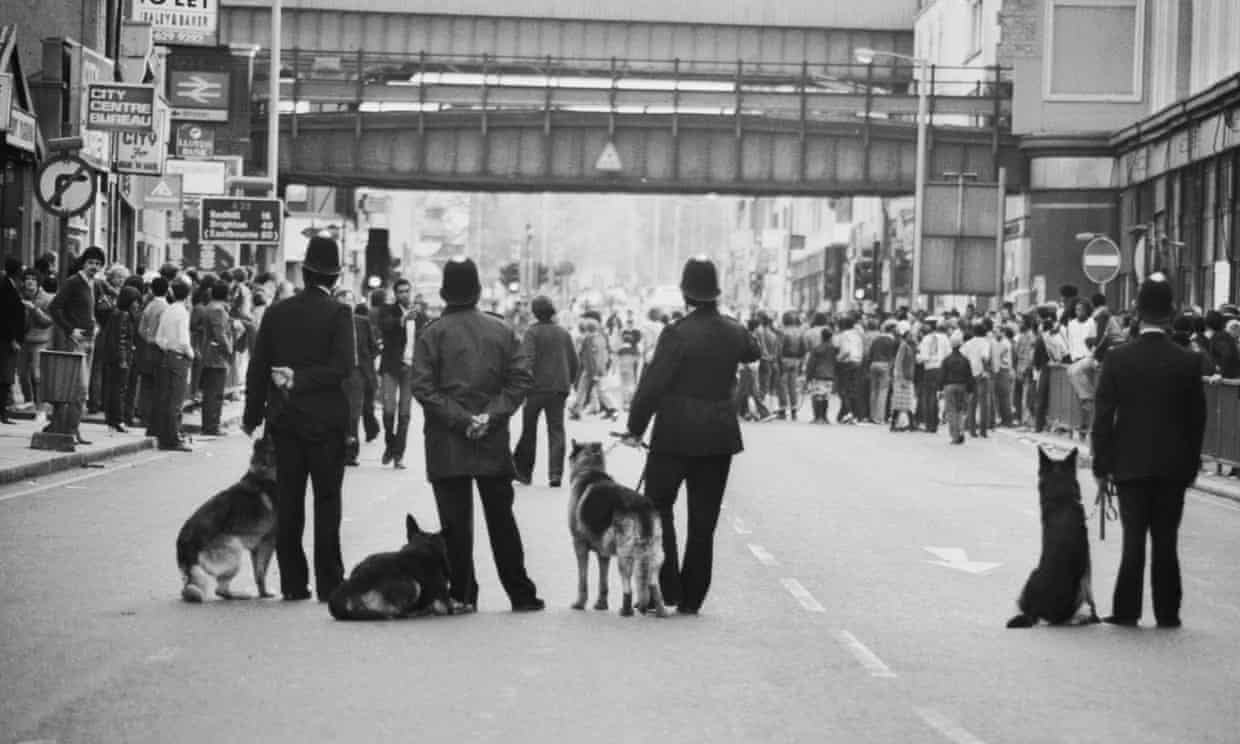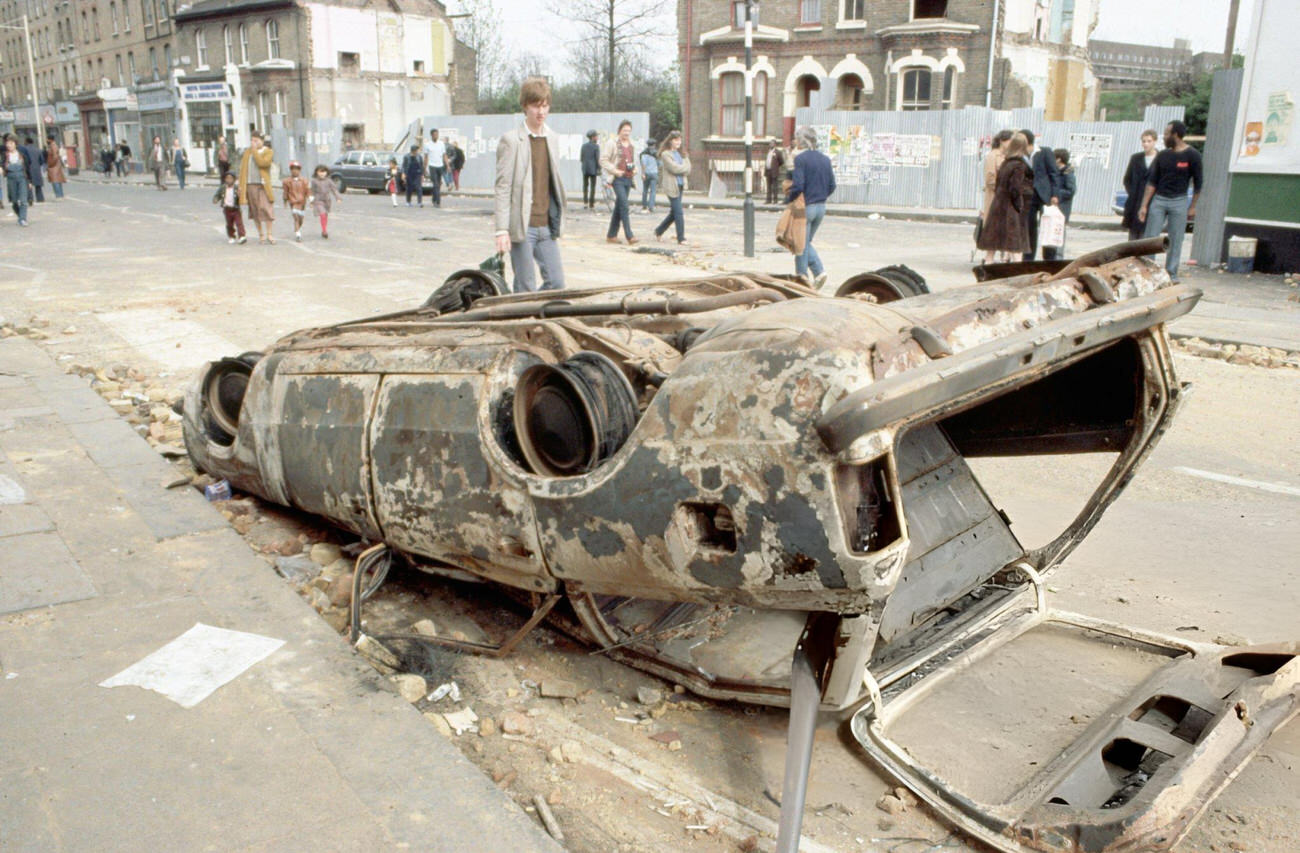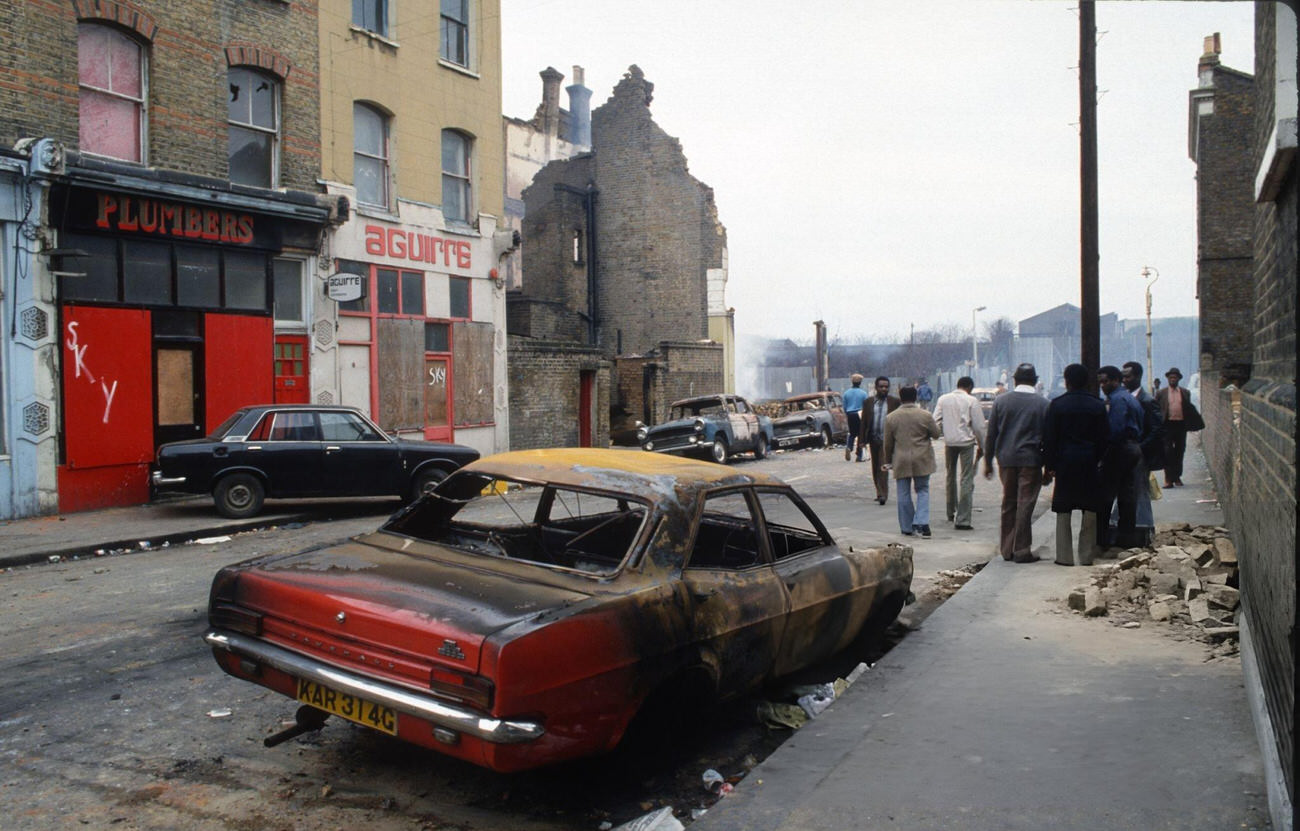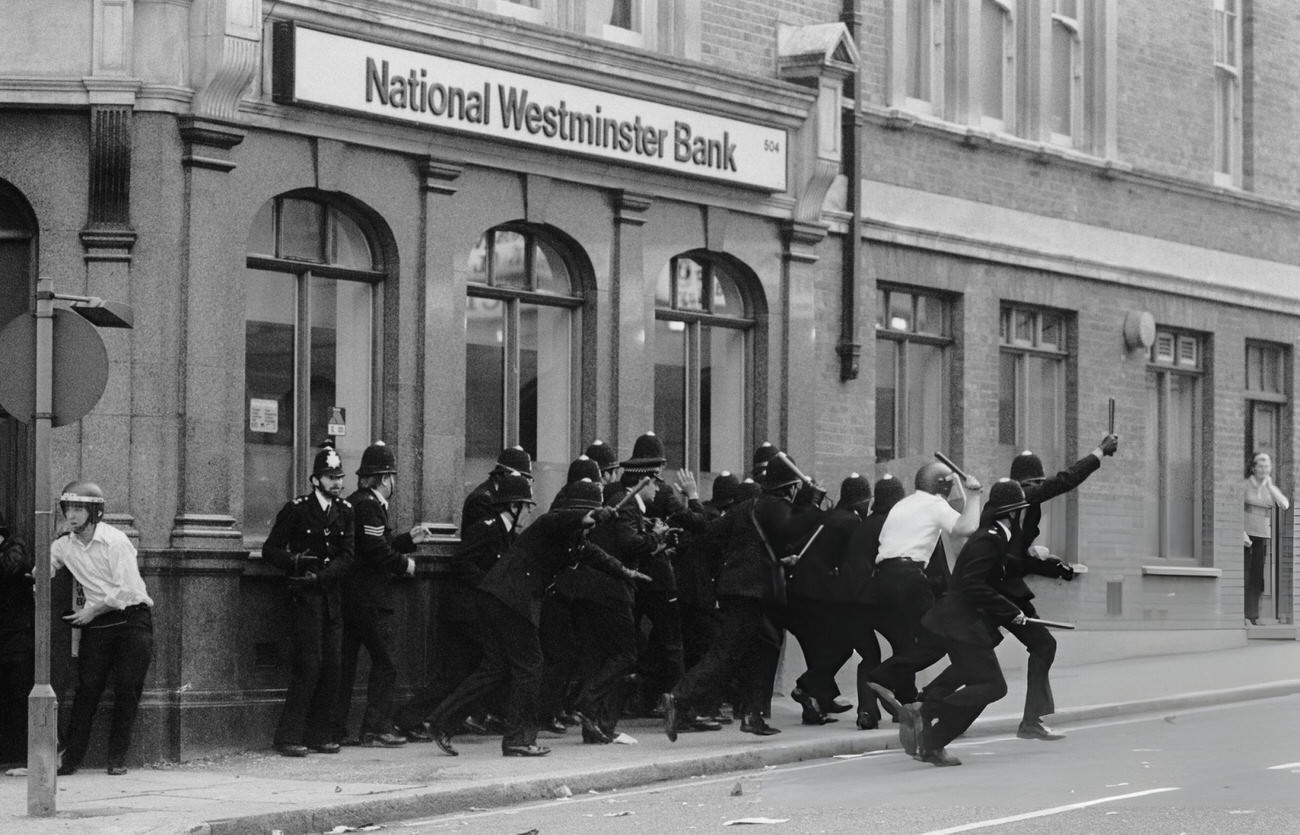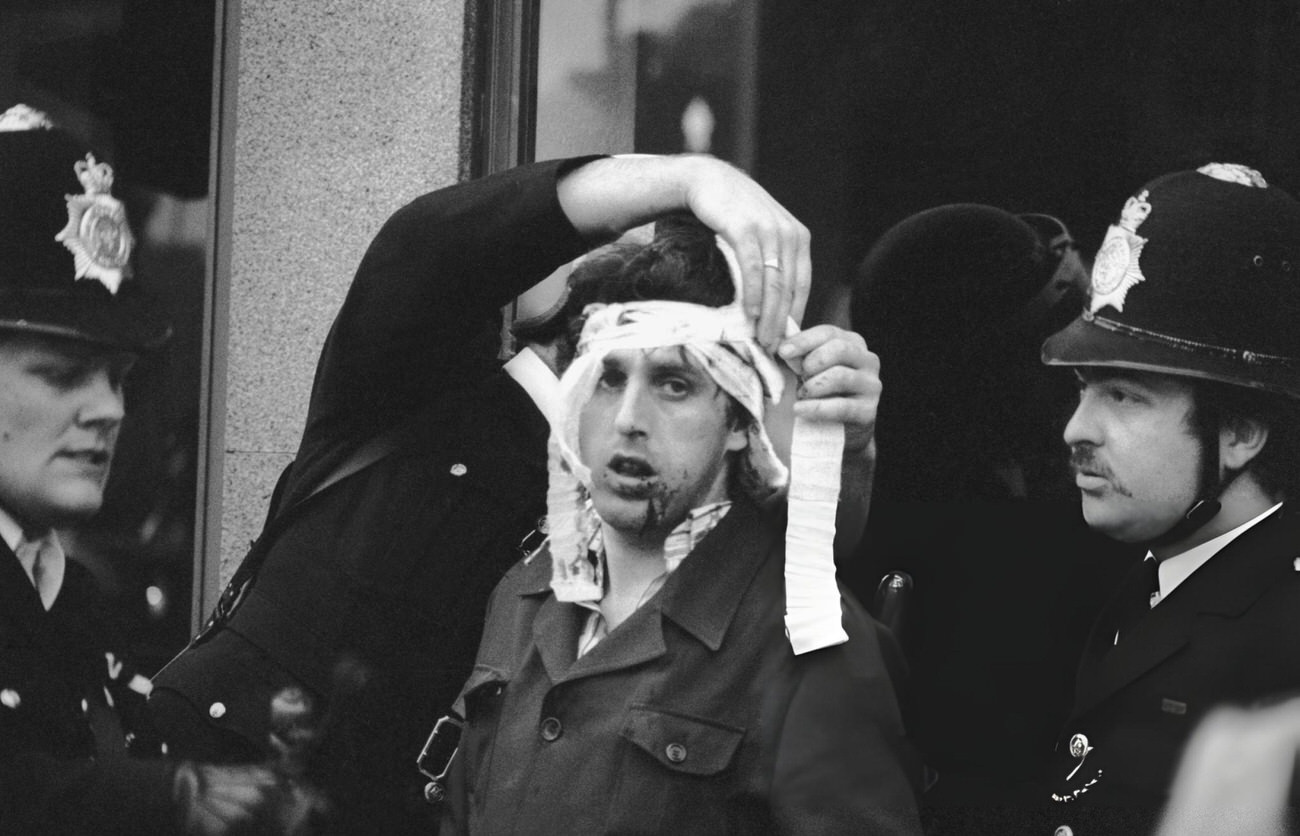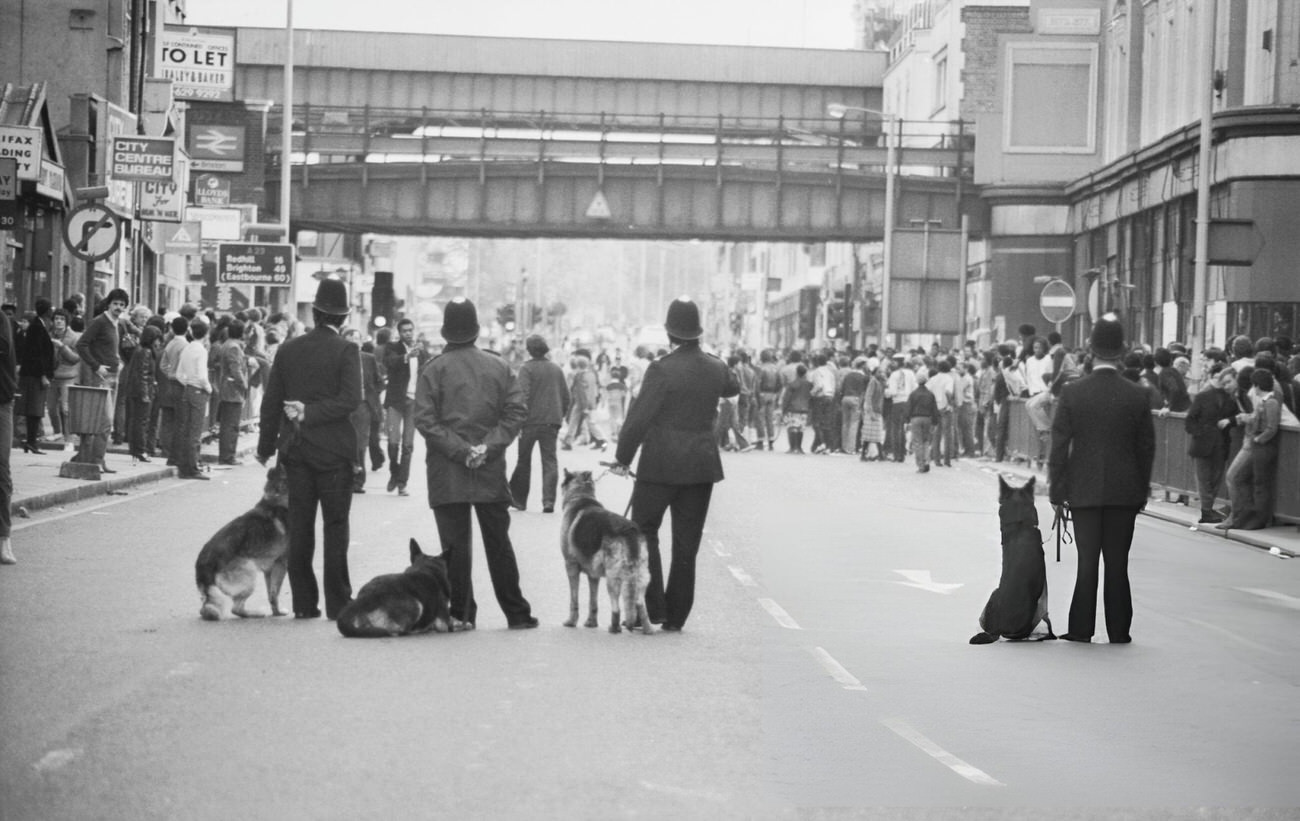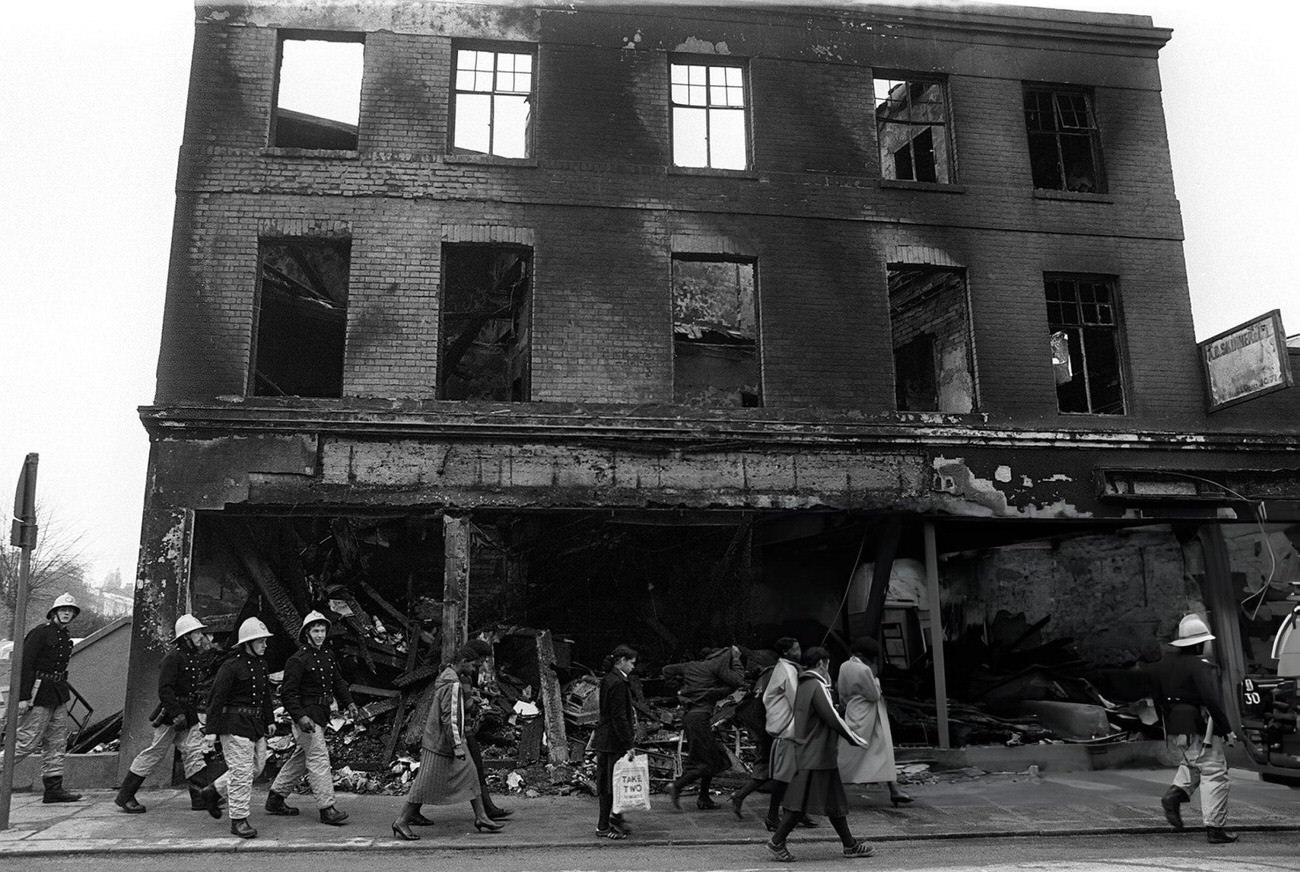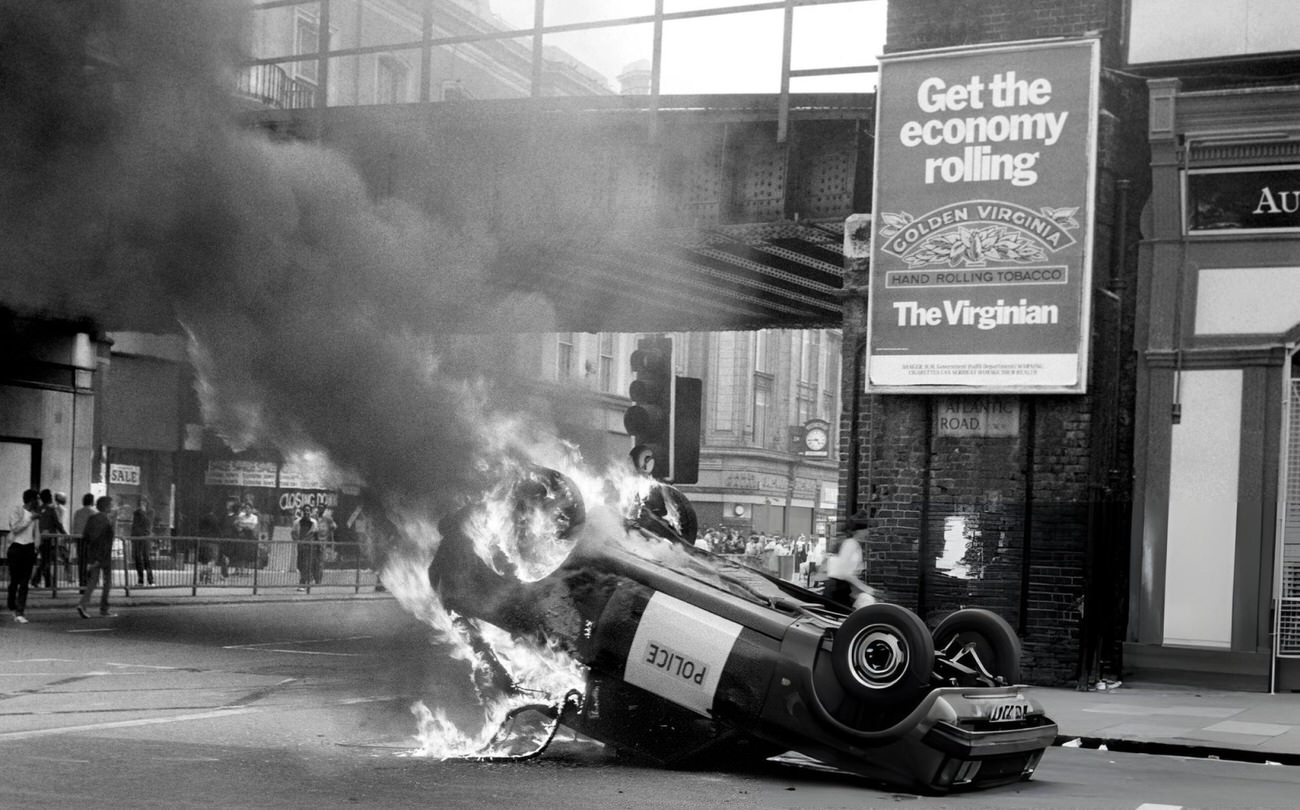In the early 1980s, Britain was going through tough times. The economy was struggling, and unemployment was high, especially among young people. In Brixton, a neighborhood in South London, many residents faced poverty and limited opportunities. Brixton had a large Black community, mainly from the Caribbean. They often felt targeted by the police and faced discrimination in daily life.
Tensions between the police and the community had been building for years. The “Sus law,” short for “suspected person law,” allowed police to stop and search anyone they thought might commit a crime. This law was used disproportionately against Black people, causing anger and resentment.
On April 10, 1981, a young Black man named Michael Bailey, also known as Mickey, was stopped by the police. He was injured during the incident, which led to rumors that the police had mistreated him. This incident was the final straw for many people in Brixton, and the anger that had been building for years finally erupted.
The First Day of Riots
The riots began on the evening of April 10. Crowds gathered on the streets, and the atmosphere quickly became tense. Confrontations between the police and the community escalated. People began throwing bottles and bricks at the police. The situation spiraled out of control, and the police struggled to maintain order.
Read more
By nightfall, the streets were chaotic. Shops and buildings were set on fire, and looting broke out. The police used riot shields and batons to try to disperse the crowds, but they were overwhelmed. The violence continued late into the night.
The Second Day
The next day, April 11, the violence resumed. Reports of the previous night’s events had spread, and more people joined the unrest. The police brought in reinforcements, but the situation remained volatile. Fires burned in several parts of Brixton, and thick smoke filled the air.
The clashes between the police and the rioters were intense. Many people were injured, including both police officers and civilians. Ambulances struggled to reach the wounded due to the chaos on the streets. The police used tear gas for the first time on the British mainland in an attempt to control the situation.
The Aftermath
By April 12, the violence had started to subside, but the damage was extensive. Over 300 people had been injured, and more than 100 vehicles had been damaged or destroyed. Many buildings were burned, and the cost of the damage was estimated to be millions of pounds.
In the days following the riots, there was a lot of discussion about what had happened and why. The government launched an inquiry to investigate the causes of the unrest. This inquiry, led by Lord Scarman, aimed to understand the reasons behind the riots and to recommend changes to prevent such events in the future.
The Scarman Report
The Scarman Report, published in November 1981, concluded that the riots were not just random acts of violence. It identified deep-seated issues, such as unemployment, poor housing, and racial discrimination, as major factors. The report also criticized the police for their heavy-handed tactics and called for better training and more community involvement in policing.
One of the key recommendations of the Scarman Report was the need for better communication between the police and the communities they served. It emphasized the importance of building trust and understanding to prevent future conflicts.
For many residents of Brixton, the riots were a response to years of frustration and mistreatment. They felt that their voices had not been heard and that the police treated them unfairly. The riots were a way of expressing their anger and demanding change.
Community leaders and activists also spoke out about the need for economic and social improvements in Brixton. They called for more job opportunities, better housing, and an end to discriminatory practices. The riots highlighted the urgent need for these issues to be addressed.
The Police Response
The police faced criticism for their handling of the riots. Many officers were injured during the clashes, and they argued that they had done their best in a difficult situation. However, the Scarman Report and public opinion pointed to the need for reform in policing methods.
In the years following the riots, efforts were made to improve police-community relations. Programs were introduced to promote better understanding and cooperation. The police also worked on recruiting more officers from diverse backgrounds to better reflect the communities they served.
The Brixton Riots led to several changes and reforms in Britain. The government took steps to address some of the underlying issues identified in the Scarman Report. New policies aimed at reducing unemployment and improving housing conditions were introduced.
The police also implemented changes in their approach to law enforcement. The “Sus law” was eventually repealed, and new guidelines were introduced for stop-and-search practices. These changes were intended to reduce the chances of discrimination and to improve relations between the police and minority communities.





